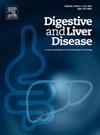A Comparative Outcome and Safety Analysis of Lenvatinib Versus Sorafenib in Hepatocellular Carcinoma recurring after Liver Transplantation
IF 3.8
3区 医学
Q1 GASTROENTEROLOGY & HEPATOLOGY
引用次数: 0
Abstract
Background
The incidence of hepatocellular carcinoma (HCC) recurrence after liver transplantation (LT) is approximately 17%. We aimed to retrospectively compare the outcomes of patients who received systemic treatment with different tyrosine kinase inhibitors (TKIs) for recurrent HCC post-LT.
Methods
Patients with recurrent HCC post-LT between 2002 and 2025 were included in a multicenter study involving three liver transplant centers in Northern Italy. The impact of first line sorafenib or lenvatinib treatment for recurrent HCC was evaluated in terms of safety (adverse events, AEs) and effectiveness, using survival analysis and stratifying patients according to significantly different baseline variables.
Results
Ninety-seven patients developed HCC recurrence post-LT and received TKIs: sorafenib (SOR-group, n=50) or lenvatinib (LEN-group, n=47). At recurrence, patients treated with sorafenib were younger (median age 56 vs. 65 years, p=0.001). In both groups patients were mainly males (80% vs. 89%, p=0.20) and recurrence was mostly intra- and extra-hepatic (52% vs. 53% p=0.51), with AFP values similar between the two groups (median value 11 µg/L in SOR-group vs. 7 µg/L in LEN-group, p=0.94). No significant differences were observed between groups in terms of proportion of patients receiving surgery or locoregional treatment before TKI (50% vs. 68%; p=0.07) as well as the time between LT and TKI start (median time 23 vs. 29 months p=0.56). During a median follow-up of 13 months of TKI therapy, 69 (71%) patients died [43 (86%) SOR-group and 26 (55%) LEN-group]. Median treatment duration was similar in the two groups (6.5 months in SOR-group vs. 5 months in LEN-group, p=0.45). The most frequently reported grade > 3 AEs in the SOR-treated group were hand-foot syndrome [18 (36%) patients vs. 1 (2%) patient in the LEN group], fatigue [15 (30%) patients vs. 5 (10%) patients], and diarrhea [13 (26%) patients vs. 1 (2%) patient]. In the LEN-treated group, the main grade > 3 AE was proteinuria [6 (12%) patients, vs 0 in the SOR-group]. Overall, patients experiencing at least one grade ≥3 AEs were more frequent in SOR-group compared to LEN-group [31 (62%) vs. 13 (28%), p=0.001)]. Only one patient treated with sorafenib died due to grade-5 AE (GI bleeding). Response to treatment was similar in the two groups, with an overall response rate of 15% in sorafenib and 18% (p=0.67) and a disease control rate of 59% and 57%, (p=0.79) and a similar median overall survival: 17 months [95% confidence interval (CI), 6-32] in SOR-group vs. 18 months (95% CI 11-34) in LEN-group, p=0.71.
Conclusions
Our findings suggest that lenvatinib is a safer option as compared to sorafenib for patients with HCC recurrence after LT, granting a comparable survival with a lower risk of severe adverse events.
Lenvatinib与Sorafenib治疗肝移植后复发肝癌的疗效和安全性比较分析
肝移植术后肝细胞癌(HCC)的复发率约为17%。我们旨在回顾性比较接受不同酪氨酸激酶抑制剂(TKIs)治疗肝移植后复发性HCC患者的结果。方法一项涉及意大利北部三个肝移植中心的多中心研究纳入了2002年至2025年间肝移植后复发性HCC患者。使用生存分析和根据显著不同的基线变量对患者进行分层,从安全性(不良事件,ae)和有效性方面评估一线索拉非尼或lenvatinib治疗复发性HCC的影响。结果肝移植后肝癌复发患者97例,接受TKIs治疗:索拉非尼(sor组,n=50)或lenvatinib (len组,n=47)。在复发时,接受索拉非尼治疗的患者更年轻(中位年龄56岁对65岁,p=0.001)。两组患者以男性为主(80%对89%,p=0.20),复发多发生在肝内和肝外(52%对53%,p=0.51),两组间AFP值相似(sor组中位值11µg/L, len组中位值7µg/L, p=0.94)。在TKI前接受手术或局部治疗的患者比例(50%对68%,p=0.07)以及LT和TKI开始之间的时间(中位时间23个月对29个月p=0.56)方面,组间无显著差异。在TKI治疗的中位随访13个月期间,69例(71%)患者死亡[sor组43例(86%),len组26例(55%)]。两组的中位治疗时间相似(sor组为6.5个月,len组为5个月,p=0.45)。在sorr治疗组中,最常报道的>; 3级ae是手足综合征[18例(36%)对LEN组1例(2%)]、疲劳[15例(30%)对5例(10%)]和腹泻[13例(26%)对1例(2%)]。在len治疗组中,主要的3级AE是蛋白尿[6例(12%),而sor组为0例]。总体而言,与len组相比,sor组中至少发生一次≥3级ae的患者更频繁[31例(62%)对13例(28%),p=0.001]。只有1例接受索拉非尼治疗的患者死于5级AE (GI出血)。两组对治疗的反应相似,索拉非尼组的总缓解率为15%,索拉非尼组为18% (p=0.67),疾病控制率为59%和57% (p=0.79),中位总生存期相似:or组为17个月[95%可信区间(CI), 6-32], len组为18个月(95% CI 11-34), p=0.71。研究结果表明,与索拉非尼相比,lenvatinib对于肝移植后HCC复发患者是一种更安全的选择,生存率相当,严重不良事件的风险较低。
本文章由计算机程序翻译,如有差异,请以英文原文为准。
求助全文
约1分钟内获得全文
求助全文
来源期刊

Digestive and Liver Disease
医学-胃肠肝病学
CiteScore
6.10
自引率
2.20%
发文量
632
审稿时长
19 days
期刊介绍:
Digestive and Liver Disease is an international journal of Gastroenterology and Hepatology. It is the official journal of Italian Association for the Study of the Liver (AISF); Italian Association for the Study of the Pancreas (AISP); Italian Association for Digestive Endoscopy (SIED); Italian Association for Hospital Gastroenterologists and Digestive Endoscopists (AIGO); Italian Society of Gastroenterology (SIGE); Italian Society of Pediatric Gastroenterology and Hepatology (SIGENP) and Italian Group for the Study of Inflammatory Bowel Disease (IG-IBD).
Digestive and Liver Disease publishes papers on basic and clinical research in the field of gastroenterology and hepatology.
Contributions consist of:
Original Papers
Correspondence to the Editor
Editorials, Reviews and Special Articles
Progress Reports
Image of the Month
Congress Proceedings
Symposia and Mini-symposia.
 求助内容:
求助内容: 应助结果提醒方式:
应助结果提醒方式:


